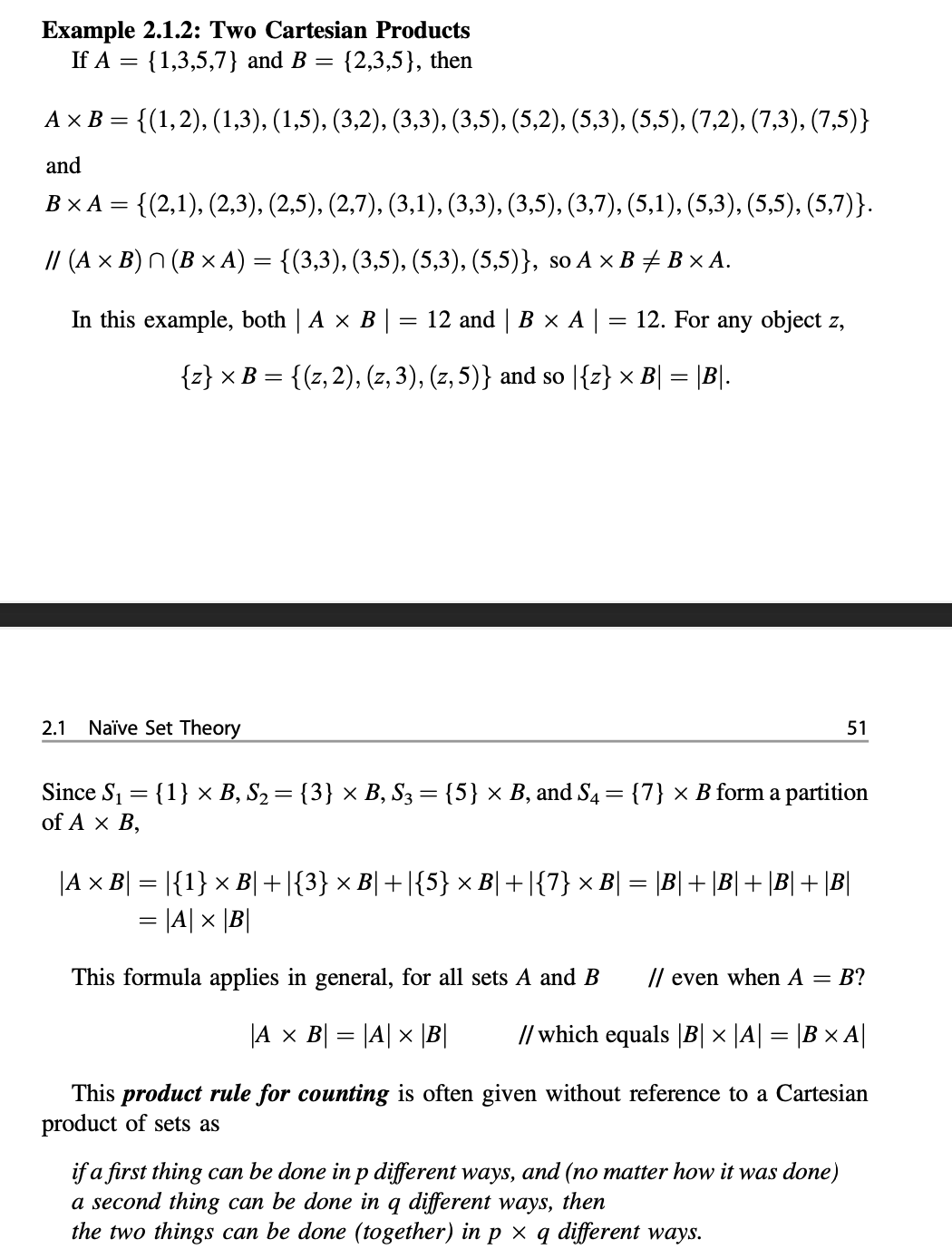Let A be the set {1,3,5,7,9} and B be the set {1,2,4,8} . Find the integer value |(AxB) ꓵ (BxA)|

Extracted text: Example 2.1.2: Two Cartesian Products If A = {1,3,5,7} and B = {2,3,5}, then %3D A x B = {(1,2), (1,3), (1,5), (3,2), (3,3), (3,5), (5,2), (5,3), (5,5), (7,2), (7,3), (7,5)} and ВХА— = {(2,1), (2,3), (2,5), (2,7), (3,1), (3,3), (3,5), (3,7), (5,1), (5,3), (5,5), (5,7)}. // (A × B) N (B × A) = {(3,3), (3,5), (5,3), (5,5)}, so A × B# B × A. In this example, both | A x B | 12 and | В x А| 12. For any object z, {z} × B = {(z,2), (z, 3), (z, 5)} and so |{z} × B| = |B|. 2.1 Naïve Set Theory 51 Since S1 = {1} ×x B, S2= {3} × B, S3 = {5} × B, and S4 = {7} × B form a partition of A x B, %3D |A x B| = |{1} × B|+|{3} × B| +|{5} × B|+|{7} × B| = \B|+ \B|+ \B|+ \B| = |A| x |B| This formula applies in general, for all sets A and B // even when A = B? |A x B| = |A| x |B| // which equals |B| × |A| = |B × A|| This product rule for counting is often given without reference to a Cartesian product of sets as if a first thing can be done in p different ways, and (no matter how it was done) a second thing can be done in q different ways, then the two things can be done (together) in p × q different ways.